 Last additions - Otsu 大津市 Last additions - Otsu 大津市 |

The famous Karasaki pine tree as seen from Lake Biwa.Mar 20, 2009
|
|

The famous Karasaki pine tree as seen from Lake Biwa.Mar 20, 2009
|
|

The Museum of Modern Art, Shiga (Shiga-kenritsu Kindai Bijutsu-kan). Closed for major renovations from April 1, 2017. Will reopen in June 2021.Opened in Aug. 1984, this large, modern museum is located in a quiet and green area called "Bunka Zone" (Culture Zone). This zone also has a Japanese garden and the Shiga Prefectural Library.
10 min. by bus from Seta Station on the JR Biwako or Tokaido Line. 滋賀県立近代美術館 MAPJan 08, 2009
|
|

Bunka Zone garden, a nice place for a nap.10 min. by bus from Seta Station on the JR Biwako or Tokaido Line (the kaisoku express train does not stop at Seta Station). Go to bus stop 1 and get on the bus for Shiga Idai (Shiga Medical Univ.). Get off at Bunka Zone-mae.Jan 08, 2009
|
|

"Bunka Zone" (Culture Zone). This zone has this Japanese garden and the Museum of Modern Art and Shiga Prefectural Library.The Museum has several exhibition halls, rental gallery, an inner courtyard, lecture hall, reading room, museum shop, and restaurant. Admission charged.Jan 08, 2009
|
|

Otsu Police StationJan 08, 2009
|
|

Keihan Shimanoseki StationJan 08, 2009
|
|

Marker for the place where Russian Crown Prince Tsarevich Nicholas Alexandrovich (later Tsar Nicholas II) was attacked by a policeman guard (Tsuda Sanzo) on May 11, 1891.Jan 08, 2009
|
|

Keihan streetcar. Great way to traverse the city. Too bad it doesn't meet up with Otsu Station.Jan 08, 2009
|
|

On this street corner is Otsu's Point Zero for its roadways.Jan 08, 2009
|
|

Monument for Otsu's Point Zero for its roadways.Jan 08, 2009
|
|

Keihan Keishin Line train coming from Kyoto.Jan 08, 2009
|
|

Jan 08, 2009
|
|

Ogoto hot spring, AgariyanseJan 08, 2009
|
|

Ogoto Station before it changed its name to Ogoto Onsen Station.Jan 08, 2009
|
|

Eight Views of Omi, Then and Now, exhibited on Otsu Post Office wallJan 08, 2009
|
|

Ogoto PortJan 08, 2009
|
|

近江八景Jan 08, 2009
|
|

On this street corner was where Russian Crown Prince Tsarevich Nicholas Alexandrovich (later Tsar Nicholas II) was attacked by a policeman guard (Tsuda Sanzo) on May 11, 1891.Jan 08, 2009
|
|

Water fountain in front of the Shiga Prefectural Capitol.Jan 08, 2009
|
|

Keihan Line streetcar, Shimanoseki StationJan 08, 2009
|
|

Monument for Otsu-juku, where Emperor Meiji once lodged.Jan 08, 2009
|
|

Jan 08, 2009
|
|

Shiga Prefectural Capitol (Shiga Kencho) is a short walk from Otsu Station. This original building was built in 1939. Newer wings have since been built. 滋賀県庁Jan 08, 2009
|
|

JR Otsu Station before renovation.Jan 08, 2009
|
|

JR Otsu StationJan 08, 2009
|
|

JR Otsu StationJan 08, 2009
|
|

JR Otsu Station, with AL Plaza shopping complex on the left. 大津駅Jan 08, 2009
|
|
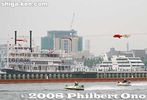
Different boats on Lake Biwa.Jan 06, 2009
|
|

Jan 06, 2009
|
|
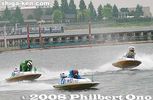
Jan 06, 2009
|
|

Jan 06, 2009
|
|

Biwako Motorboat raceJan 06, 2009
|
|

Jan 06, 2009
|
|

Jan 06, 2009
|
|

Start line. Note that you will need to apply for and obtain a permit to photograph the motor boat races. Otherwise, they will stop you from shooting.Jan 06, 2009
|
|

Go!Jan 06, 2009
|
|

ScoreboardJan 06, 2009
|
|

Jan 06, 2009
|
|

Jan 06, 2009
|
|

Old postcard showing the pine trees of Awazu.Jan 06, 2009
|
|

Jan 06, 2009
|
|

Find some gamblers here inside the Biwako Kyotei stands. It's a modern and comfortable indoor facility.Jan 06, 2009
|
|

Biwako motorboat race in Otsu.Jan 06, 2009
|
|

Place your bets.Jan 06, 2009
|
|

A lot of older women were also there.Jan 06, 2009
|
|

You can also watch the motorboat races outside.Jan 06, 2009
|
|

Pine trees of Awazu. This road is near the lakeshore. 粟津Jan 06, 2009
|
|

Jan 06, 2009
|
|

Jan 06, 2009
|
|

Biwako Motorboat Race Course. Biwako Kyotei びわこ競艇場Jan 06, 2009
|
|

Pine trees of Awazu. One of the Eight Views of Omi is now a non-scenic, semi-industrial road.Jan 06, 2009
|
|

More rocky lakeshoreJan 06, 2009
|
|

Leaving Zeze CastleJan 06, 2009
|
|
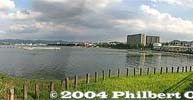
Lake front near Zeze Castle Park. Finally we see reeds.Jan 06, 2009
|
|

Jan 06, 2009
|
|

Jan 06, 2009
|
|

Now on the lake shore heading toward Omi Ohashi Bridge.Jan 06, 2009
|
|

Omi Ohashi Bridge and Mt. MikamiJan 06, 2009
|
|

Omi Ohashi BridgeJan 06, 2009
|
|

Jan 06, 2009
|
|

Stoney beachJan 06, 2009
|
|

Approaching Zeze Castle ParkJan 06, 2009
|
|

Omi Ohashi Bridge 近江大橋Jan 06, 2009
|
|
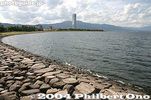
Rocky shoreJan 06, 2009
|
|

Bridge going to Zeze Castle ParkJan 06, 2009
|
|
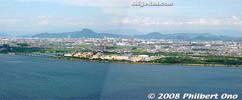
Panoramic photo of the southeastern shore of Lake Biwa as seen from Top of Otsu.Jan 06, 2009
|
|

Zeze Castle ParkJan 06, 2009
|
|

Omi Ohashi Bridge at the southern tip of Lake Biwa. 近江大橋Jan 06, 2009
|
|

Central Otsu as seen from Top of Otsu. The right half of this picture is basically reclaimed land.Jan 06, 2009
|
|

Southern Lake BiwaJan 06, 2009
|
|

Otsu lakefront as seen from Top of Otsu.Jan 06, 2009
|
|

Michigan cruising on Lake Biwa.Jan 06, 2009
|
|

Otsu Prince Hotel MAPJan 06, 2009
|
|
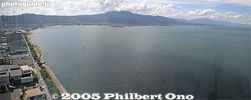
Otsu and Lake Biwa as seen from the top of Otsu Prince Hotel.Jan 06, 2009
|
|

At the top of Otsu Prince Hotel is a restaurant called Top of Otsu. See grand views of the city and Lake Biwa on sunny days. Order a soft drink which should be affordable. It's worth the views to be had.Jan 06, 2009
|
|

Otsu's nice lakefront walking promenade in an area called Nagisa Koen Park in Nionohama. Notice the box on the right... なぎさ公園Jan 06, 2009
|
|

Artificial shoreline is actually not good for the lake ecologically. They should grow reeds instead. Reclaimed land.Jan 06, 2009
|
|

Piazza Omi contains a hotel, passport office, and the Shiga Intercultural Association for Globalization. Jan 06, 2009
|
|

Fish disposal box for black bass and blue gill and other invasive species. If you catch one, don't throw it back into the lake. Dispose of it in this box or take it home.Be sure to close the cover to keep cats out. If you catch a non-native fish like black bass and blue gill fish in the lake, they urge you to bring it in and throw it away in this bin. They don't want you to throw it back into the lake.Jan 06, 2009
|
|

Monument where Akechi Mitsuhide's son-in-law and retainer Samanosuke (Mitsuhide) rode his horse on the lake to Sakamoto Castle in June 1582. Now a legend.Upon hearing of his brother's defeat and death by Hideyoshi at the Battle of Yamazaki, Samanosuke rushed back to Sakamoto Castle where he committed suicide.Jan 06, 2009
|
|

Jan 06, 2009
|
|

Approaching Otsu Prince Hotel, major landmark visible from afar.Jan 06, 2009
|
|

Jan 06, 2009
|
|

Inside Biwako Bunkakan museum.Jan 06, 2009
|
|

Biwako Hall, Shiga's most modern concert hall. This area is also reclaimed land.Jan 06, 2009
|
|

Jan 06, 2009
|
|

View from Biwako Bunkakan museum, looking east where Biwako Hall can be seen.Jan 06, 2009
|
|

View from Biwako Bunkakan museum, looking south toward the city.Jan 06, 2009
|
|

Entrance to Biwako Bunkakan museum. A lookout deck is on the top of this tower.Jan 06, 2009
|
|

Views from Biwako Bunkakan museum.Jan 06, 2009
|
|

Jan 06, 2009
|
|

Lookout deck in Biwako Bunkakan museum.Jan 06, 2009
|
|

Biwako Bunkakan museum closed in March 2008. The museum was known for Buddhist art, including National Treasures. It has been here for as long as most Otsu residents can remember. Jan 06, 2009
|
|

View from Biwako Bunkakan museum, looking west.Jan 06, 2009
|
|

LakefrontJan 06, 2009
|
|
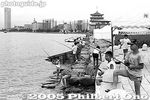
Fishing in summer.Jan 06, 2009
|
|

Jan 06, 2009
|
|

It used to be a lake fish aquarium as well before the Lake Biwa Museum opened in Kusatsu.Jan 06, 2009
|
|

Biwako Bunkakan museum is right on the shore, even over the water. It's a landmark, but a tacky-looking castle replica housed a cultural and art museum and gallery.Jan 06, 2009
|
|
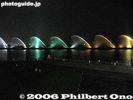
Nightly water fountain show at Otsu Port. MAPJan 06, 2009
|
|
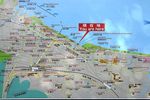
Map of central Otsu and lakefront. It is quite easy to walk or bicycle along the lake shore in central Otsu, starting from Hama-Otsu.Jan 06, 2009
|
|

Jan 06, 2009
|
|

Jan 06, 2009
|
|

Central Otsu lakefront is rocky most of the way, with no beaches.Jan 06, 2009
|
|

Otsu Castle markerJan 06, 2009
|
|

Central Otsu lakefrontJan 06, 2009
|
|

Biwako Hama-Otsu Station (renamed from Hama-Otsu Station) on the Keihan Line. Most of the land north of the Keihan Line along the lake has been reclaimed.Jan 06, 2009
|
|

Otsu Castle site. There's a lot of open land here, so it would be great if they decided to reconstruct the castle. A perfect location for a castle.Jan 06, 2009
|
|

Otsu Port and this area is reclaimed land.Jan 06, 2009
|
|

Michigan paddlewheel boat is based at Otsu Port. Daily cruises offered.Jan 06, 2009
|
|

Otsu Castle site. This area had many moats, but they have been filled in and much of Otsu's waterfront land has been reclaimed.Jan 06, 2009
|
|

The rock is cracked open, and the lady changes into a fox.Jan 06, 2009
|
|

The head flipped up to reveal a fox's head.Jan 06, 2009
|
|

The thirteenth and last float was Jingu Kogo-yama, originally built in 1749. 神功皇后山/猟師町Jan 06, 2009
|
|

The float is associated with Empress Jingu of the 4th century. When she gestures to write some characters on a rock with her bow, and the characters magically appear.Jan 06, 2009
|
|

A young court lady who was actually a fox aiming to kill the Emperor was turned into a rock by this priest.Jan 06, 2009
|
|

Look at how many chimaki this girl caught!!!Jan 06, 2009
|
|

The floats proceed down Teramachi-dori.Jan 06, 2009
|
|

Jan 06, 2009
|
|

Empress JinguJan 06, 2009
|
|

Otsu Festival posterJan 06, 2009
|
|

Wheel stopperJan 06, 2009
|
|

Jan 06, 2009
|
|

Readily identifiable with its vermillion wheels.Jan 06, 2009
|
|

Jan 06, 2009
|
|

Jan 06, 2009
|
|

Jan 06, 2009
|
|

Ornate, carved ceiling.Jan 06, 2009
|
|

Kakkyo (Guo Ju in Chinese) was one of the 24 Chinese filial exemplars.Jan 06, 2009
|
|

This red-haired Chinese lion comes out of a rock on Mt. Tiantaishan in China and jumps and spins all around amid peony flowers. Quite comical.Jan 06, 2009
|
|

The twelveth float was Komeikisui-zan, originally built in 1694. 孔明祈水山/中堀町Jan 06, 2009
|
|

Jan 06, 2009
|
|

The karakuri on Gekkyuden-yama float has two dancers, one wearing a crane crown and the other a turtle crown, dancing in front of the Emperor.Jan 06, 2009
|
|

Jan 06, 2009
|
|

Jan 06, 2009
|
|

The tapestry on the back is said to been made in Flanders, Begium in the 17th century.Jan 06, 2009
|
|

Beautiful painted ceiling.Jan 06, 2009
|
|

The eleventh float was Sesshoseki-zan, originally built in 1673. 殺生石山/柳町Jan 06, 2009
|
|

Jan 06, 2009
|
|

The seventh float is Seio Bo-zan. 西王母山/丸屋町Jan 06, 2009
|
|

The tenth float was Kakkyo-yama, originally built in 1693. 郭巨山/後在家町・下小唐崎町Jan 06, 2009
|
|

Trojan War tapestryJan 06, 2009
|
|

The eighth float is Gekkyuden-zan. 月宮殿山/上京町Jan 06, 2009
|
|

The ninth float is Shakkyo-zan. 石橋山/湊町Jan 06, 2009
|
|

Jan 06, 2009
|
|

Jan 06, 2009
|
|

The sixth float is Nishinomiya Ebisu-yama. 西宮蛭子山/白玉町Jan 06, 2009
|
|

Jan 06, 2009
|
|

A peach splits opens and out comes a peach boy. The children's story Momotaro is based on this.Jan 06, 2009
|
|

Jan 06, 2009
|
|

Jan 06, 2009
|
|

The fifth float is Shojo-yama. 猩々山/南保町Jan 06, 2009
|
|

Jan 06, 2009
|
|

The float has much Chinese influence in its artwork.Jan 06, 2009
|
|

Jan 06, 2009
|
|

Jan 06, 2009
|
|

Jan 06, 2009
|
|

Jan 06, 2009
|
|

Sake is poured from a keg for the Shojo to drink.Jan 06, 2009
|
|

Jan 06, 2009
|
|

Jan 06, 2009
|
|

Jan 06, 2009
|
|

Jan 06, 2009
|
|

The karakuri shows Ebisu (God of Business Prosperity) going fishing for sea bream (an auspicious fish).Jan 06, 2009
|
|

Genji-yama musicians.Jan 06, 2009
|
|

Jan 06, 2009
|
|

The second float is Yutate-yama. 湯立山/玉屋町Jan 06, 2009
|
|

Jan 06, 2009
|
|

Lady Murasaki write Tale of Genji as these little figurines circle around her.Jan 06, 2009
|
|

Jan 06, 2009
|
|

Side view of Genji-yama.Jan 06, 2009
|
|

The third float is Genji-yama. 源氏山/中京町Jan 06, 2009
|
|

The karakuri has Lady Murasaki writing A Tale of Genji at Ishiyama-dera temple in Otsu.Jan 06, 2009
|
|

Jan 06, 2009
|
|

The fourth float is Ryumon Taki-yama. 龍門滝山/太間町Jan 06, 2009
|
|

Jan 06, 2009
|
|

The top of the Saigyo Sakura Tanuki-yama float also has a stuffed tanuki (raccoon dog). This is how to identify this float at Otsu Matsuri.Jan 06, 2009
|
|

Jan 06, 2009
|
|

Jan 06, 2009
|
|

Jan 06, 2009
|
|

The karakuri shows a hermit emerging from the flowers and talking with Priest Saigyo.Jan 06, 2009
|
|

The float is followed by a cart loaded with chimaki.Jan 06, 2009
|
|

Always first in the Otsu Matsuri procession is the Saigyo Sakura Tanuki-yama float. It has cherry blossoms in the front. 西行桜狸山Jan 06, 2009
|
|

Toward the end of the route is an even narrower road. This is where I photographed and shot videos of all the floats and all the karakuri performances.Jan 06, 2009
|
|

So let me introduce all the thirteen floats of the Otsu Matsuri.Jan 06, 2009
|
|

This is another spot where the karakuri dolls perform.Jan 06, 2009
|
|

Jan 06, 2009
|
|

Must be a great view from the window.Jan 06, 2009
|
|

The Jingu Kogo-yama float has vermillion-painted wheels. It was also the last float in this year's procession.Jan 06, 2009
|
|

Jan 06, 2009
|
|

The Chuo Odori road is wide, making it easy to view the floats. It's not as crowded as Gion Matsuri in Kyoto. There's a more earthly atmosphere at Otsu Matsuri.Jan 06, 2009
|
|

Sign says, "Throw us chimaki!"Jan 06, 2009
|
|

Those people in the windows get a lot of chimaki thrown in. Otsu Matsuri.Jan 06, 2009
|
|

Jan 06, 2009
|
|

Musicians chime in.Jan 06, 2009
|
|

Karakuri dolls performing. They are manipulated with strings and other devices below or on the side. (There are no strings above the puppets.)Jan 06, 2009
|
|
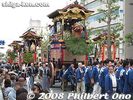
On with the procession.Jan 06, 2009
|
|

On a narrower street, there are houses with open windows on the upper floor which is almost the same level as the float.Jan 06, 2009
|
|

At various spots along the procession route, each float stops to perform the karakuri puppets.Jan 06, 2009
|
|

Jan 06, 2009
|
|

More chimaki for the crowd.Jan 06, 2009
|
|

Jan 06, 2009
|
|

Shrine priest on horseback.Jan 06, 2009
|
|

After the lunch break, the floats geared up to move on. This is the Genji-yama float with banners declaring the Millennium anniversary of Tale of Genji.Jan 06, 2009
|
|

Parading on Chuo Odori road. Jan 06, 2009
|
|

On Chuo Odori road, this spot had spectator seats (admission charged) to watch the karakuri performances which last only for a few minutes. At other spots, you can watch it for free.Jan 06, 2009
|
|

They also threw chimaki to the crowd. Chimaki are small bundles of straw wrapped with a thin hand towel. They were all blessed by Tenson Shrine.Jan 06, 2009
|
|

Alright! I caught one! No more bad luck and misfortune to me!! It might make me immune to black cats always crossing my path. The chimaki lasts for one year after which you supposed to return it to the shrine to be burned during the Dondo-yaki Festival.Jan 06, 2009
|
|

The floats are steered by men behind the wheels.Jan 06, 2009
|
|

Jan 06, 2009
|
|

The floats gathered at Chuo-dori one after another.Jan 06, 2009
|
|

From noon to 1:45 pm, the floats gathered here on Chuo Odori, a wide road leading to Otsu Station. It was a lunch break and a chance for us to look at the floats up close.Jan 06, 2009
|
|

The crowd wait for chimaki to be thrown. This is something even Kyoto's Gion Matsuri does not do. (They used to do it.)Jan 06, 2009
|
|

A chimaki supposed to ward off bad luck, so we all want to catch one. You hang it above an entrance or under the eaves.Jan 06, 2009
|
|

Hey, throw one here!! The thirteen floats throw tens of thousands of these chimaki during the procession. It makes this festival unusual. Most other float festivals don't do it.Jan 06, 2009
|
|

The procession starts at 9 am and lasts until 5:30 pm. The procession route is different during the morning and afternoon. Jan 06, 2009
|
|

The crowd desperate to catch a chimaki. People tend to push and shove, and fight for one.Jan 06, 2009
|
|

Jan 06, 2009
|
|

It was in 1638 when the tri-wheel hikiyama floats started to be constructed for the festival. As Otsu prospered, more floats were built until 1776 when the last Otsu Matsuri float (Gekkyuden-zan) was built.Jan 06, 2009
|
|

Saigyo Sakura Tanuki-yama. Notice the three wheels instead of four. 西行桜狸山Jan 06, 2009
|
|

The route goes through central Otsu (walkable from Otsu Station.) A map of the route is available at the info counter in Otsu Station.Jan 06, 2009
|
|

A small parade comes thrpugh.Jan 06, 2009
|
|

These pictures were taken on Oct. 12, 2008. This is the first float in the procession, called Saigyo Sakura Tanuki-yama. 西行桜狸山Jan 06, 2009
|
|

The second day of the Otsu Matsuri Festival is called the Honmatsuri, featuring a procession of the thirteen floats as the festival climax. The highlight are the performances by the karakuri mechanical dolls on the floats.Jan 06, 2009
|
|

Float's front wheel, made of wood. The floats creek as they move.Jan 06, 2009
|
|

Genji-yama float. 源氏山Jan 06, 2009
|
|

During Yoimiya at night, each float had musicians performing.Jan 06, 2009
|
|

Musicians at the Genji-yama float. 源氏山Jan 06, 2009
|
|

Jan 06, 2009
|
|

Tapestry designated as an Important Cultural Property. The Trojan War's Sack of Troy (from Greek mythology) is depicted. From the Gekkyuden-zan float.Jan 06, 2009
|
|

Karakuri dolls from the Kakkyo-yama float.Jan 06, 2009
|
|

Karakuri puppet from the Genji-yama float. This is Lady Murasaki writing The Tale of Genji. 2008 is a special year for this float because of the novel's 1000th anniversary. 源氏山Jan 06, 2009
|
|

Karakuri dolls from Gekkyuden-zan float.Jan 06, 2009
|
|

Karakuri puppet from the Genji-yama float. 源氏山Jan 06, 2009
|
|

Karakuri dolls from the Kakkyo-yama float.Jan 06, 2009
|
|

Jan 06, 2009
|
|

Also on display in the house was this folding screen.Jan 06, 2009
|
|

This Gekkyuden-zan float had instruments (bells, drums) which anybody could try and play. Jan 06, 2009
|
|

Notice the gold carvings on the ceiling.Jan 06, 2009
|
|

The Otsu Matsuri is a festival of Tenson Shrine in Otsu. The path to the shrine is packed with worshippers. Jan 06, 2009
|
|

Tenson Shrine torii gate. 天孫神社Jan 06, 2009
|
|

Inside the house was the tanuki mask worn by Jihei.Jan 06, 2009
|
|

This house in Kajiya-cho was open to the public to exhibit stuff related to the lead float Saigyo Sakura Tanuki-yama.Jan 06, 2009
|
|

Praying at Tenson Shrine.Jan 06, 2009
|
|

People crowd the route to the shrine hall to worship.Jan 06, 2009
|
|

Wooden tanuki (raccoon dog) mask worn by Jihei, the man who started Otsu Matsuri.Jan 06, 2009
|
|

In 1596, salt vendor Jihei (塩売 治兵衛) wore a tanuki mask and danced during a Tenson Shrine festival. People liked his dancing so much that they built a float two years later and Jihei danced on it.Jan 06, 2009
|
|

Jan 06, 2009
|
|

Him dancing on the festival float continued for over ten years after which his old age prevented him from continuing. A tanuki karakuri puppet was then used in his place on the float.Jan 06, 2009
|
|

Yutate-yama floatJan 06, 2009
|
|

Saigyo Sakura Tanuki-yama float with musicians playing on the bridge. 西行桜狸山Jan 06, 2009
|
|
| 2449 files on 10 page(s) |
 |
 |
7 |  |
 |
|